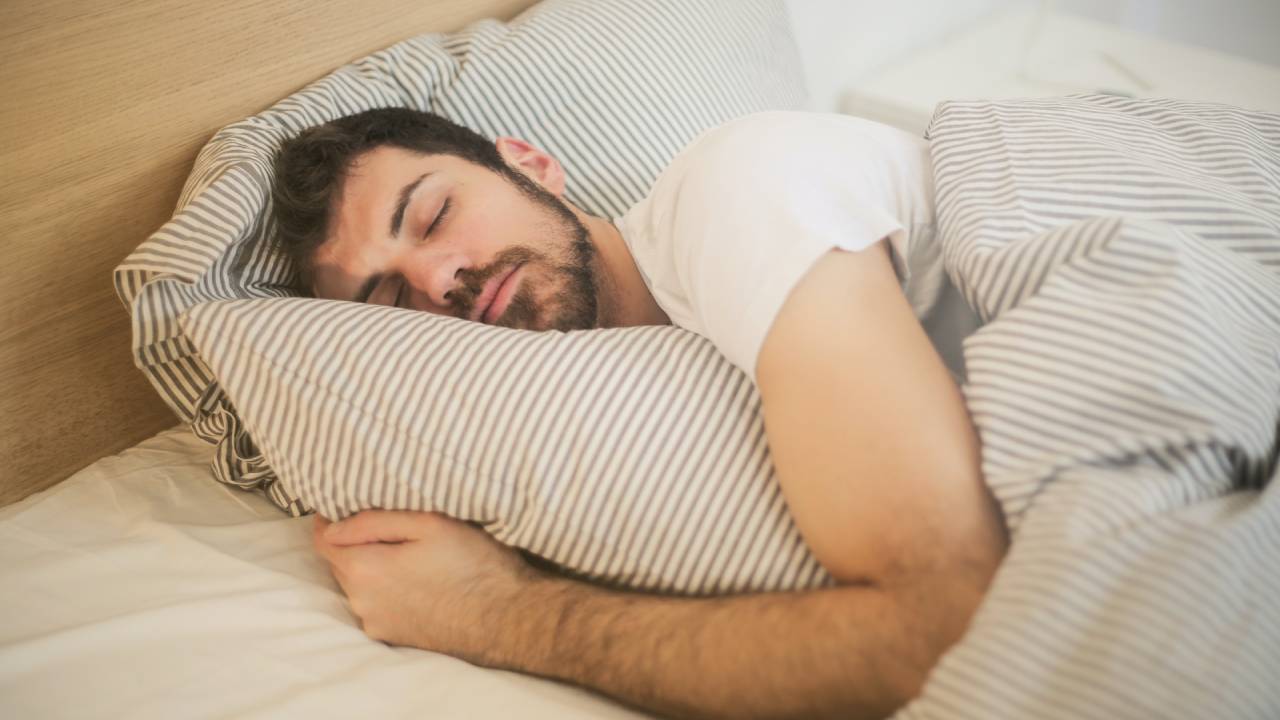Sleeping on your right side is better for brain health, says scientists
Improve brain function & other health problems by sleeping on your right side


The position you sleep in is completely unique to you. While some people like sleeping on their backs, most enjoy sleeping on their side, with various studies reporting that around 50% of UK adults favour side sleeping.
Regardless of the sleep position you choose, there are various pros and cons that come with them, from improved posture and digestion to more aches and pains in the neck and back area. The best and worst postures for sleep can have serious impacts on your sleep pattern, and your physical and mental health, so it’s important to make sure you have the best mattress and best pillows for your sleep position.
If you’re a side sleeper or are finding your current sleep posture uncomfortable, recent scientific research has shown that sleeping on your right side comes with many health benefits, including improved brain health. According to neuroscientist Tara Swart, M.D., pHD. who has conducted extensive research surrounding sleep hygiene, she found that the best position for brain health is sleeping on your side, specifically on the right side of your body.
This is because sleeping on your right side “is more efficient for glymphatic cleansing, where your brain flushes out waste products overnight. Sleeping on your right side has been shown in research to best support this clean-up process.” By sleeping on your right side, you support your brain health and functions while you age. This not only helps make your days more productive but it can help protect you against further health problems down the line.

What are the benefits of sleeping on your side?
In our 5 tips for side sleepers, we noted that sleeping on your side can help aid digestion, reduce acid reflux, minimise back pain and combat snoring and sleep apnoea by keeping your airways open. While choosing the right or left side doesn’t make a huge difference about how well or how long you sleep for, they can help you through various ages and stages of your life.
For example, in an article by the New York Post, sleeping on your right side is said to help lower your risk of developing neurological diseases later in life, like dementia, Alzheimer’s or Parkinson’s. All of this is linked to the side sleeping position helping the brain clear our waste faster than if you were on your back or stomach.
Further to this, the Sleep Foundation has reported findings that sleeping on your right is better for your heart and people with heart failure have been encouraged to choose this side over the left, as the latter can cause discomfort.
Get all the latest news, reviews, deals and buying guides on gorgeous tech, home and active products from the T3 experts
On the other hand, the left side is also a good position for your health, especially for pregnant women. By sleeping on the left side, this helps improve blood flow to the mother and baby, and it reduces pressure on internal organs by keeping the uterus off the liver.
It’s been proven time and time again that sleeping on your side is the best position for comfort, support and health. For a well rested night’s sleep on your side, see our guide on how to find the best mattress for side sleepers.

Beth is Home Editor for T3, looking after style, living and wellness. From the comfiest mattresses to strange things you can cook in an air fryer, Beth covers sleep, smart home, coffee machines, watches, grooming tools, fragrances, gardening and more.
In her spare time, Beth enjoys running, reading, baking and attempting craft projects that will probably end in disaster!